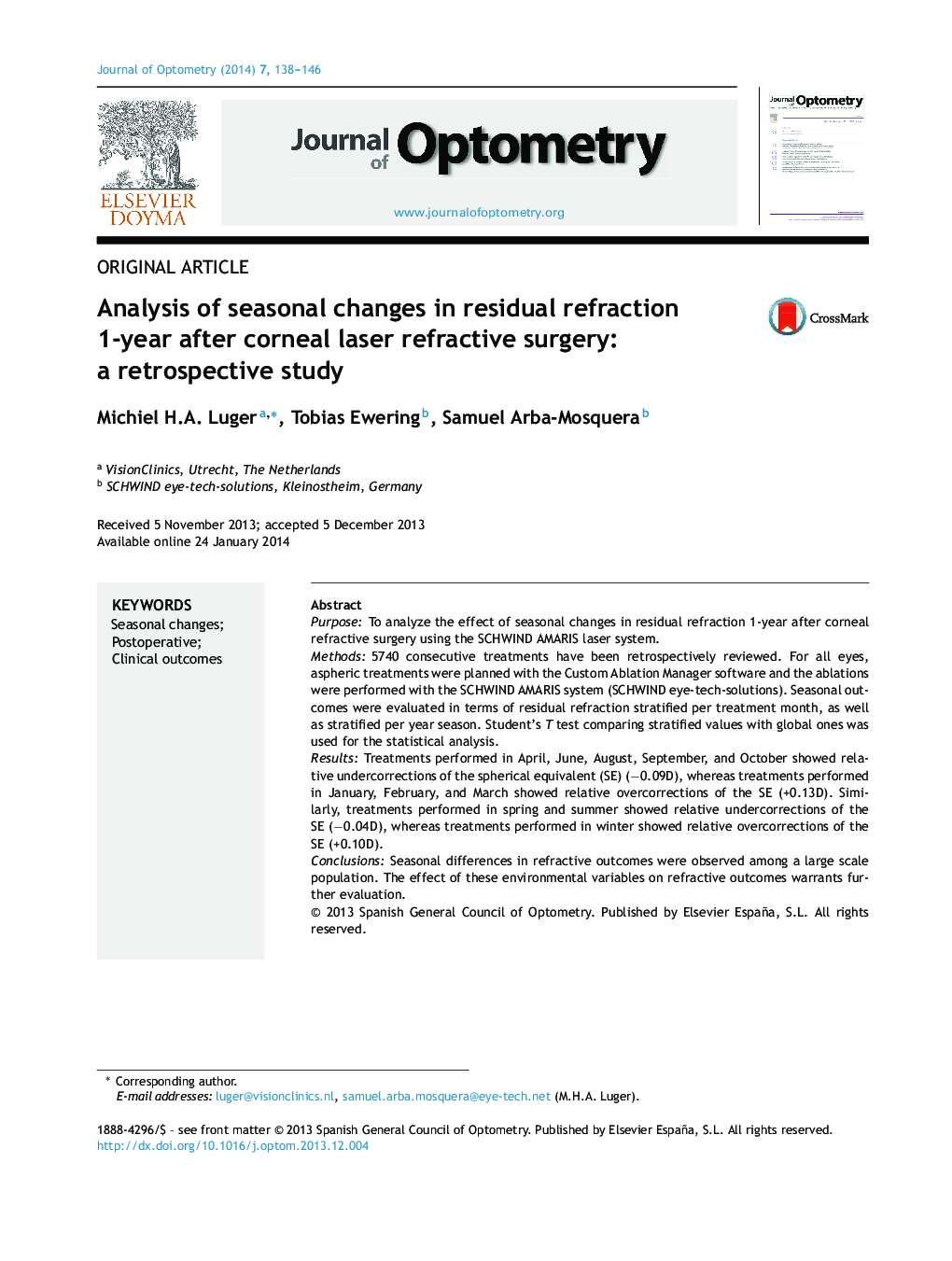| Article ID | Journal | Published Year | Pages | File Type |
|---|---|---|---|---|
| 2695054 | Journal of Optometry | 2014 | 9 Pages |
PurposeTo analyze the effect of seasonal changes in residual refraction 1-year after corneal refractive surgery using the SCHWIND AMARIS laser system.Methods5740 consecutive treatments have been retrospectively reviewed. For all eyes, aspheric treatments were planned with the Custom Ablation Manager software and the ablations were performed with the SCHWIND AMARIS system (SCHWIND eye-tech-solutions). Seasonal outcomes were evaluated in terms of residual refraction stratified per treatment month, as well as stratified per year season. Student's T test comparing stratified values with global ones was used for the statistical analysis.ResultsTreatments performed in April, June, August, September, and October showed relative undercorrections of the spherical equivalent (SE) (−0.09D), whereas treatments performed in January, February, and March showed relative overcorrections of the SE (+0.13D). Similarly, treatments performed in spring and summer showed relative undercorrections of the SE (−0.04D), whereas treatments performed in winter showed relative overcorrections of the SE (+0.10D).ConclusionsSeasonal differences in refractive outcomes were observed among a large scale population. The effect of these environmental variables on refractive outcomes warrants further evaluation.
ResumenObjetivoAnalizar el efecto de los cambios estacionales en la refracción residual, transcurrido un año tras cirugía refractiva corneal empleando el sistema láser SCHWIND AMARIS.MétodosSe revisaron retrospectivamente 5.740 tratamientos consecutivos. En todos los casos se planificaron los tratamientos asféricos con el software Custom Ablation Manager, realizándose las ablaciones con el láser excímer SCHWIND AMARIS (SCHWIND eye-tech-solutions). Se evaluaron los resultados estacionales en términos de refracción residual, estratificada por mes de tratamiento, y por estación del año. Se utilizó la prueba de t de Student para comparar los valores estratificados con los globales en el análisis estadístico.ResultadosLos tratamientos realizados en abril, junio, agosto, septiembre y octubre reflejaron infracorrecciones relativas del equivalente esférico (EE) (-0,09D), mientras que los tratamientos realizados en enero, febrero y marzo mostraron unas sobrecorrecciones relativas del EE (+0,13D). De igual modo, los tratamientos realizados en primavera y verano reflejaron infracorrecciones relativas del EE (-0,04D), mientras que los tratamientos realizados en invierno mostraron sobrecorrecciones relativas del EE (+0,10D).ConclusionesSe observaron diferencias estacionales en los resultados refractivos en una población a gran escala. El efecto de estas variables ambientales sobre los resultados refractivos justifica una evaluación adicional.
